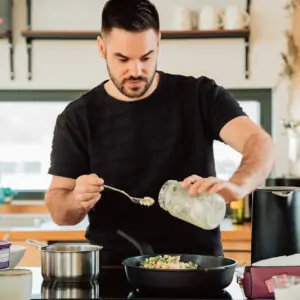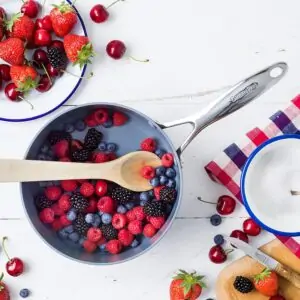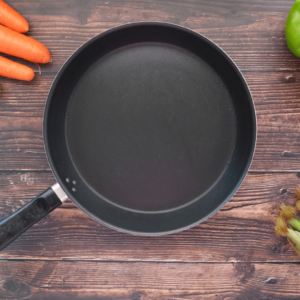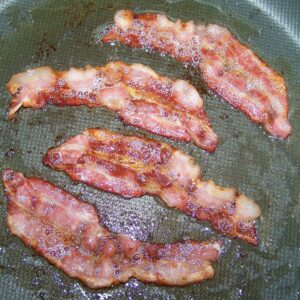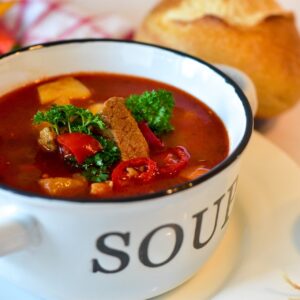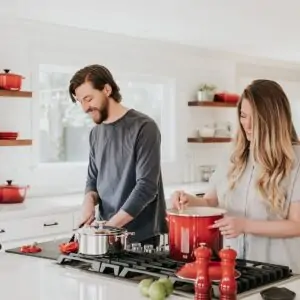Cooking is an essential day-to-day task. While cooking enthusiasts try to create adventures in cooking, average homeowners want to maximize the efficiency of their appliances and cookware. The key to performing well is to have the requisite materials, skills, and equipment.
When shopping, you often see that cookware is made from different materials. When given a wide range of choices it can get very confusing. Which is the best for your kitchen? Each type of cookware material suits different things.
JUMP TO:
7 Cookware Materials & Their Uses
1. Stainless Steel
Stainless steel is by far the most widely used material to make cookware. It’s the top used for several reasons, such as being anti-corrosive. It is made by mixing steel with nickel and chromium. There is, however, a ratio to conduct the mixing. For instance, 18/10 is widely used.
Stainless steel is used to make the best pots because it is anticorrosive, attractive, and durable. The material does not react with alkaline foods and rarely picks scratches. These properties are very critical since the food does not react and thus remains pure and fresh. Also, the food cannot discolour or pick any metallic flavours. Stainless steel is very reliable because it is oven, broiler, and dishwasher safe.
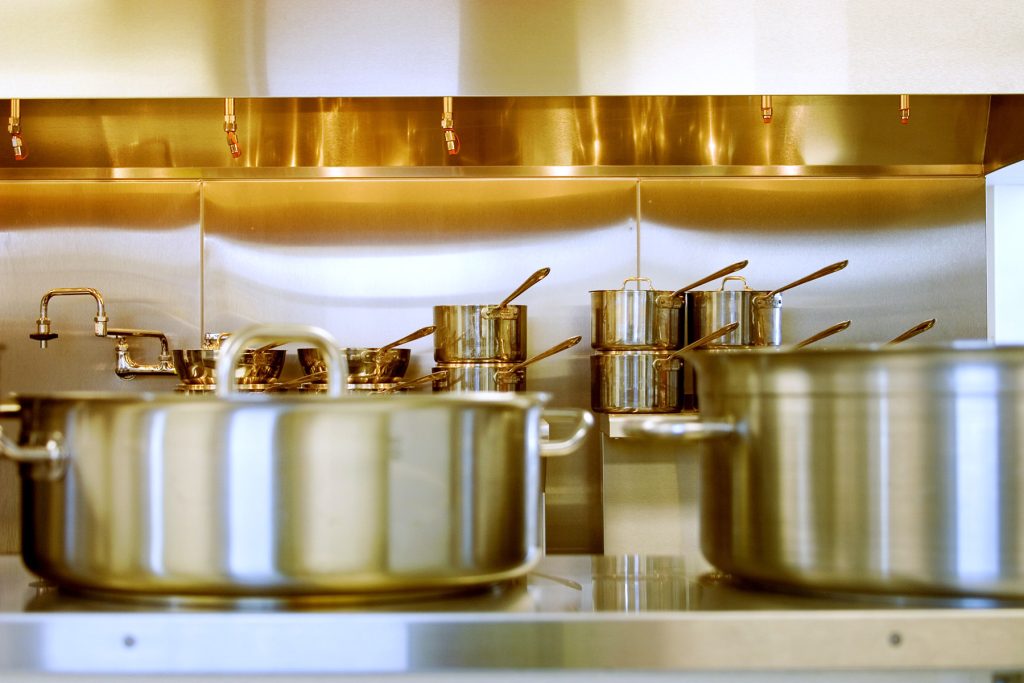
On the negative side, it’s a very poor conductor of heat and thus would make a very poor frying pan or griddle pan on itself. Stainless steel’s poor conductivity is combated by permanently bonding some layers with highly conductive metals such as copper and aluminium.
The combination yields a highly durable material yet so attractive and comes with very minimal maintenance costs. It’s, therefore, the best choice for making most pans. Cookware made of bonded stainless steel boasts outstanding reliability and extensive uses.
Stainless steel is also improved via a less durable technique known as impact bonding. A heavy-gauge aluminium plate is attached to the bottom side of a thin gauge stainless steel appliance. Although they are less durable, they can give you excellent service while minimizing your budget. Devices made from impact-bonded stainless steel are cheap and still boast of non-reactive interior and ease of maintenance.
Uses
- Making pots and broiler
- Making saucepans
- Griddle pans
Best For
- Making sauces, sauteing, braising, and searing
PROS
- Durable
- Attractive
- Unreactive
- Anticorrosive
- Dishwasher and oven safe
CONS
- Expensive
- Poor conductor of heat
2. Aluminium
Aluminium is the second most reactive metal, just behind copper. Apart from being light and inexpensive, the material is naturally weak and reactive. Also, its reactive nature makes it challenging to make cookware from it entirely. It’s usually associated with a non-stick coating to ensure it does not contact foods, which may trigger a chemical reaction.
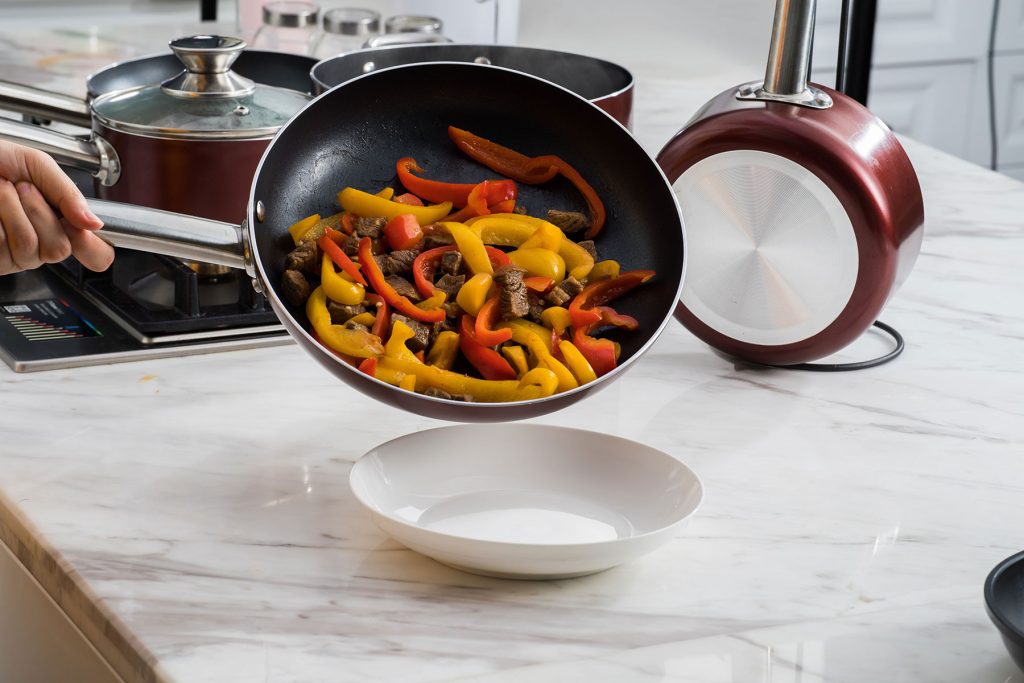
Aluminium is also strengthened through anodization or clad with stainless steel. In the recent past, many manufacturers are embracing anodization and nonstick coating on aluminium appliances. Aluminium is thus the most popular material for stainless steel clad appliances.
Cookware made with aluminium is lightweight and easy to clean. Even so, most of the appliances are not induction compatible. Also, they vary in terms of dishwasher and oven safe.
Uses
- Its lightweight design makes it ideal for making large appliances like griddles, large water pots, saucepans, roasting pans, and rondeau pots. It, however, must be anodized or have a nonstick coating.
PROS
- Lightweight
- Highly conductive
- Inexpensive
CONS
- Reactive
- Most are not induction compatible
3. Copper
Copper leads all other metals used to make cookware when it comes to heat conduction. It heats quickly and evenly as well as cooling down when removed from the hob. It is therefore very responsive and gives you ultimate control over the heating. It’s consequently prized by professional chefs globally. Most copper pans are heavy gauge.
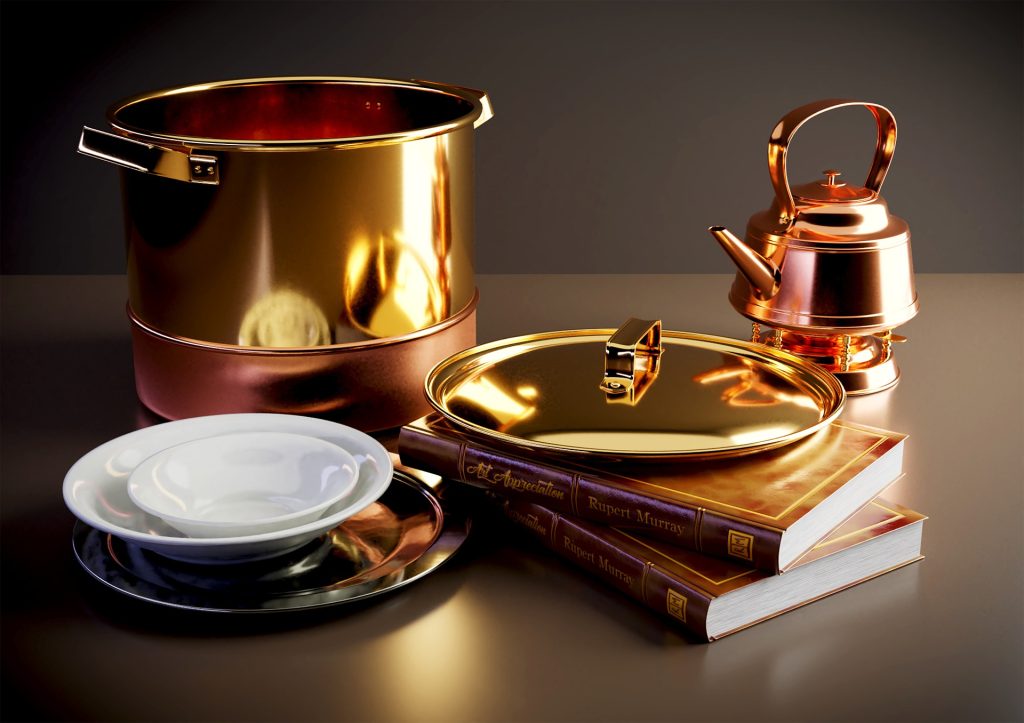
On the other hand, copper cannot be used on its own to make cookware because it is highly reactive. Since it will react with acidic foods and give your food a metallic taste and a yellow tint, it is thus lined with non-reactive metals like tin and stainless steel. Tin is preferred due to its responsiveness and unreactive nature. It, however, wears over time, and you may need an artisan to re-tin your pan or pot. Stainless steel is ideal even though it lowers the responsiveness of the pan. Using a heavy gauge copper appliance minimizes the effect of stainless steel on the responsiveness of the pot.
Uses
- Used to make copper pots and pans
Good For
- Steaming, sauteing, boiling, and braising
PROS
- Highly conductive
- Heat spread evenly
- Cooks quickly
- Attractive
CONS
- Not dishwasher safe
- Reactive
- Expensive
- Not-induction compatible
4. Cast Iron
Cast iron is defined by its two most popular properties: very durable and poor heat conductivity. Besides durability, cast iron cookware does not warp, chip, or get dented. Cast iron appliances are also heavy.
Another plus for cast iron is it’s known as one of the healthiest materials you can cook with.
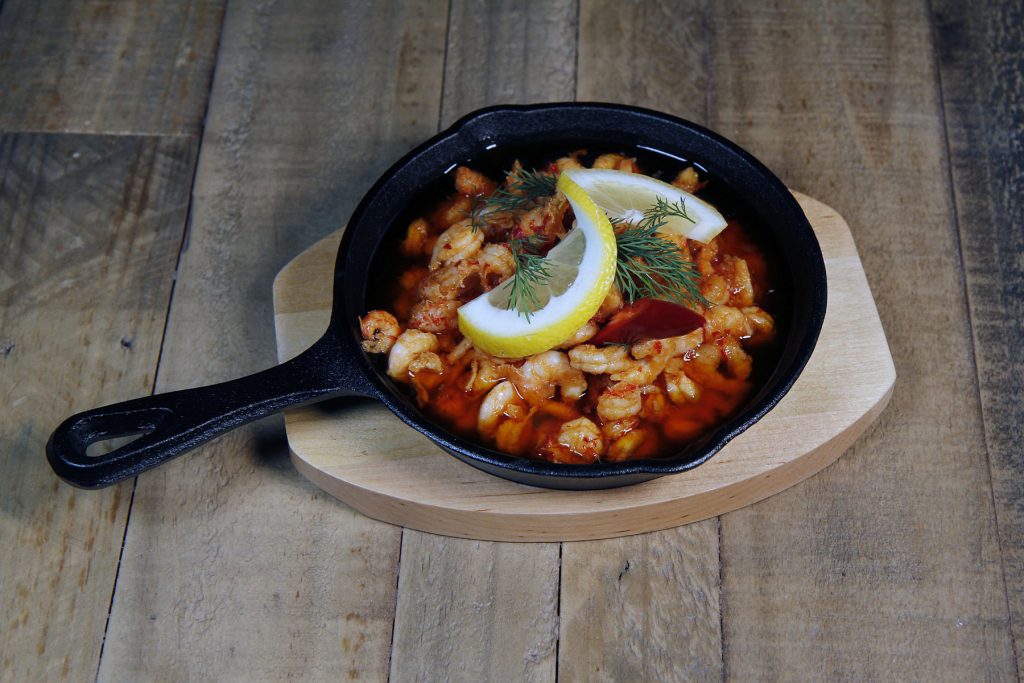
Cast iron cookware can be used in its natural form or when lined with an enamel coating. Although the performance is the same, there are some minor differences. Raw cast iron requires regular seasoning to prevent rust, plus give it an excellent nonstick interior and iconic good looks. Currently, factory-seasoned cookware is available in the market. Alternatively, enamel-coated cookware is unreactive, maintenance-free, visually appealing, and easy to clean. Those properties, however, come at a cost.
Use
- Poor conductivity makes it ideal for making griddles, dutch ovens, grill pans, and fry pans.
Good For
- Baking, roasting, frying, searing and stove-to-oven
PROS
- Very durable
- Does not warp
- Natural cast iron cookware is cheap
- Maintains heat well
CONS
- Heavy
- Must be enamel-coated or seasoned regularly
- Enamel coated options are expensive
You can learn more about the pros & cons of enamel cookware in this article
5. Carbon Steel
Carbon steel is also a perfect conductor. It is precisely used for speciality pan use, mainly as a wok or skillet. If seasoned properly, it develops a natural nonstick property. The pans are very versatile but slow to heat and very heavy.
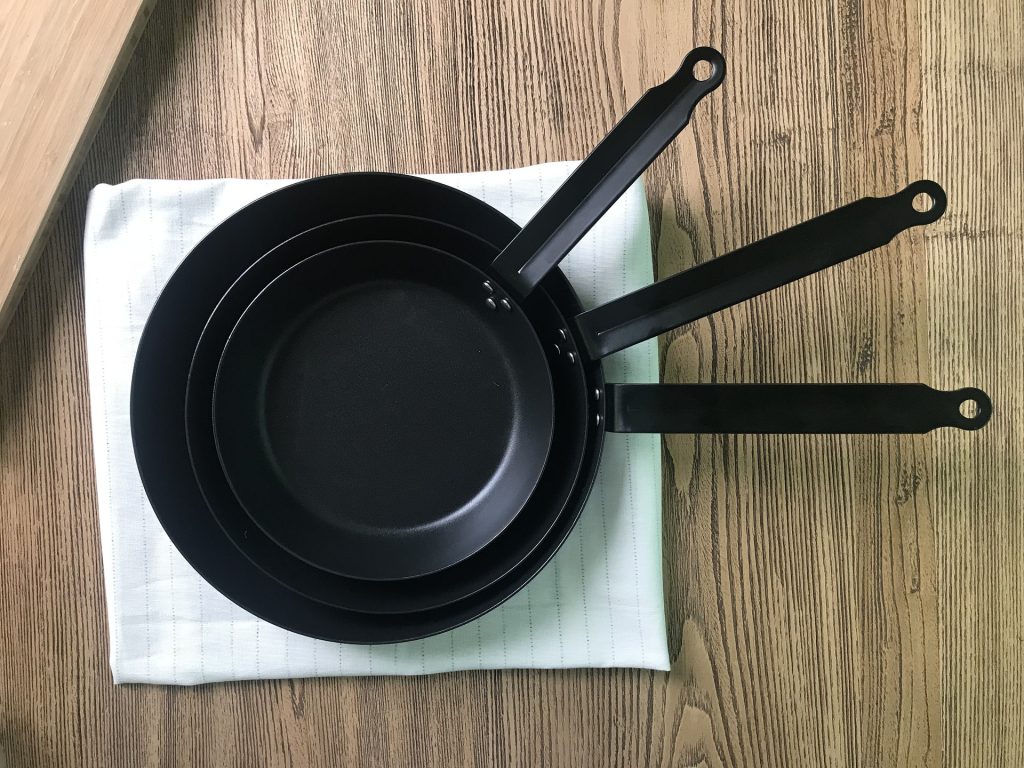
Uses
- Used for making enamelled cookware; roasting pans, lobster pots, broiling pans, and kettles
Good For
- Searing steaks, braising, baking bread, crusty pommes anna, stir fry, and blackening fish, vegetables, and cakes.
PROS
- Inexpensive
- Develops a naturally nonstick surface if seasoned properly
- Durable
CONS
- Rusts, if not seasoned properly
- Heats slowly
6. Glass
Glass cookware is not very popular. They are used for making casseroles dishes.
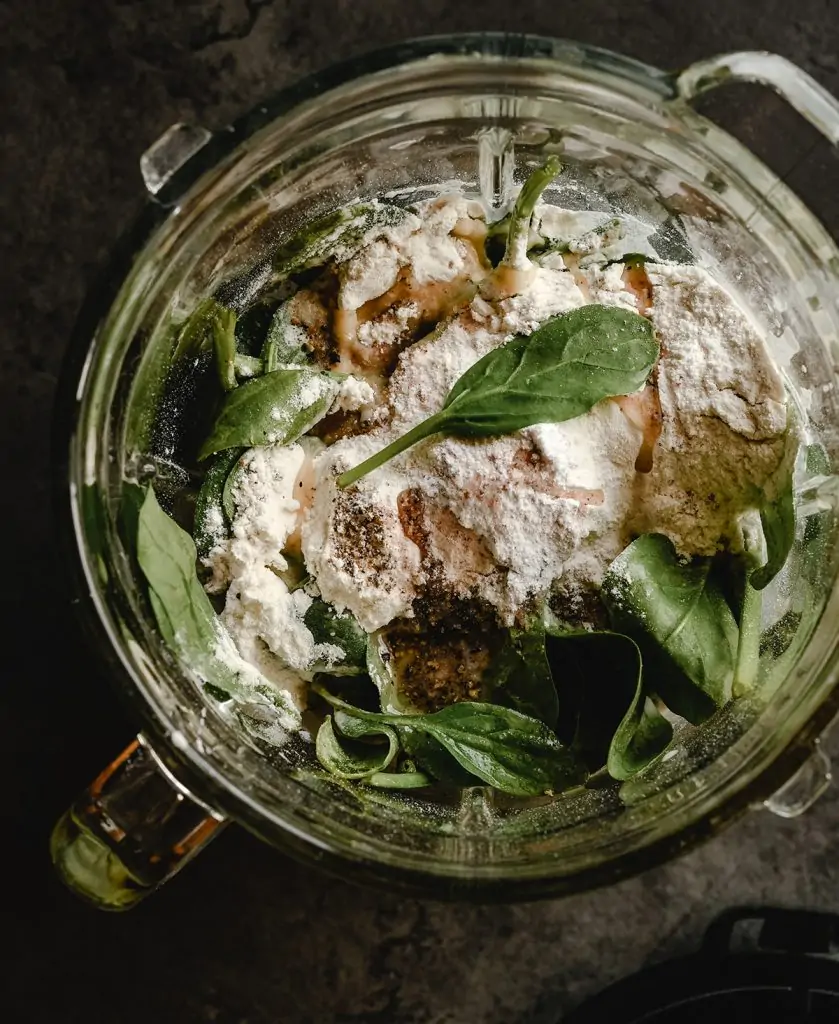
PROS
- You can see food as it cooks
- Excellent serving dishes too
CONS
- Not-very nonstick
7. Clay And Stoneware
Clay and stoneware vessels are probably the oldest materials used to make cookware. They are durable and produce excellent cooking results. Cookware made from clay and stoneware vary in sizes, shapes and is available in a wide array of colours, making it attractive in the kitchen and on the table.
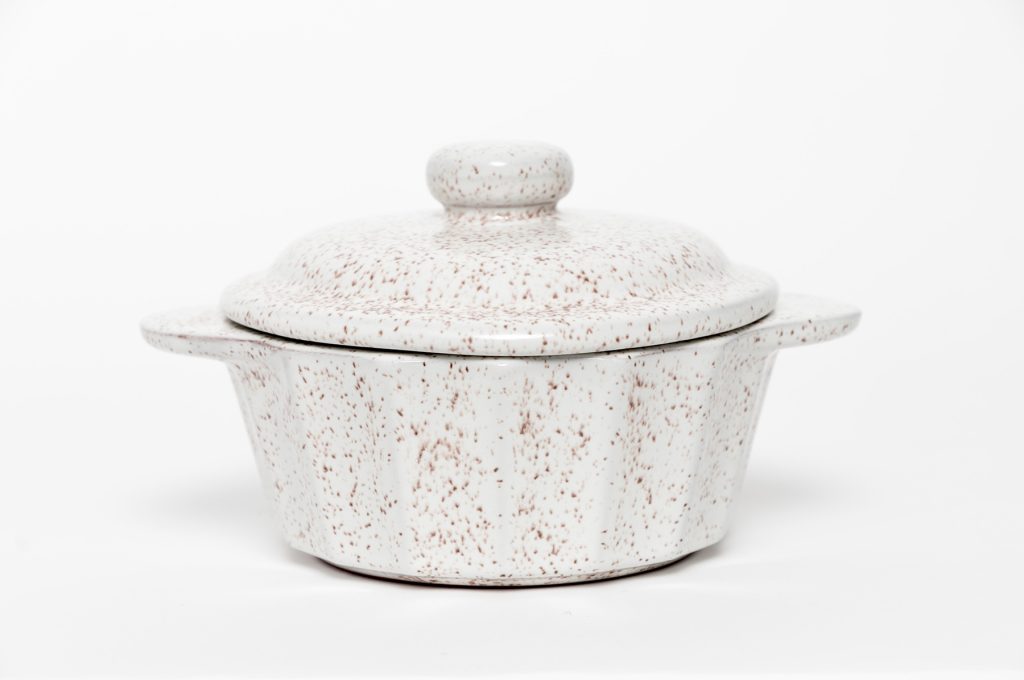
They are non-reactive and are often considered the safest when it comes to cooking. The cookware heats up rapidly and retains heat excellently like cast iron. Some manufacturers are making pots and pans from stoneware that are usable on electric and gas hobs.
Uses
- Most cookware is used to make casseroles and baking dishes. On the other hand, Stoneware cookware is ideal for making tagine pots, pizza stones, and bread pans.
PROS
- Cheap
- Durable
- Heats evenly and rapidly
- Retains heat well
- Oven safe
CONS
- Not induction compatible
- Some may contain lead
- Stoneware gets quite hot and should not be placed on a cold surface
Cookware Materials : Summing Up
Choosing cookware can be a nightmare because of all different choices. This guide lets you choose the best material for your pan based on your needs. For instance, aluminium is best if you want lightweight yet inexpensive cookware.
To avoid disappointments in the kitchen, you should choose the best material for cookware depending on your needs. Do you need cookware material that is durable, inexpensive, non-reactive, good conductor, retains heat well or is compatible with most hobs? The choice is yours.

